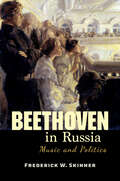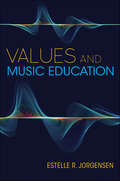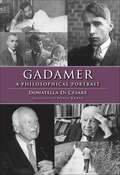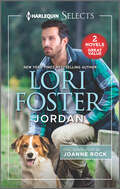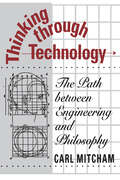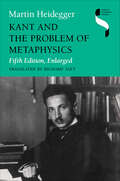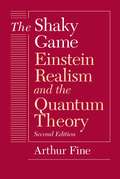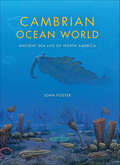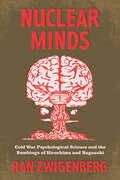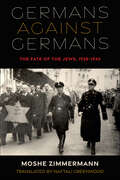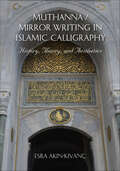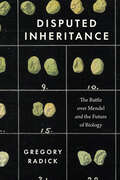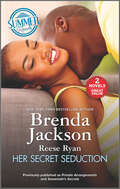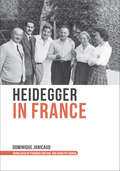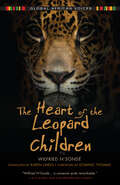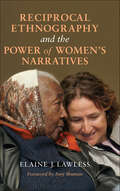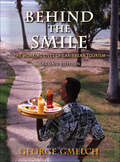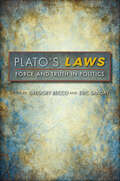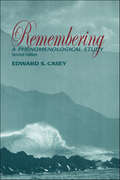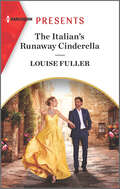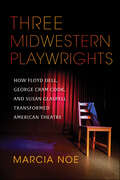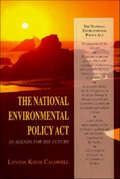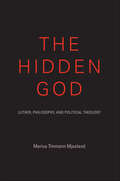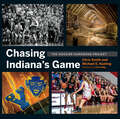- Table View
- List View
Beethoven in Russia: Music and Politics
by Frederick W. SkinnerHow did Ludwig van Beethoven help overthrow a tsarist regime? With the establishment of the Russian Musical Society and its affiliated branches throughout the empire, Beethoven's music reached substantially larger audiences at a time of increasing political instability. In addition, leading music critics of the regime began hearing Beethoven's dramatic works as nothing less than a call to revolution. Beethoven in Russia deftly explores the interface between music and politics in Russia by examining the reception of Beethoven's works from the late 18th century to the present. In part 1, Frederick W. Skinner's clear and sweeping review examines the role of Beethoven's more dramatic works in the revolutionary struggle that culminated in the Revolution of 1917. In part 2, Skinner reveals how this same power was again harnessed to promote Stalin's campaign of rapid industrialization. The appropriation of Beethoven and his music to serve the interests of the state remained the hallmark of Soviet Beethoven reception until the end of communist rule. With interdisciplinary appeal in the areas of history, music, literature, and political thought, Beethoven in Russia shows how Beethoven's music served as a call to action for citizens and weaponized state propaganda in the great political struggles that shaped modern Russian history.
Values and Music Education (Counterpoints: Music and Education)
by Estelle R. JorgensenWhat values should form the foundation of music education? And once we decide on those values, how do we ensure we are acting on them?In Values and Music Education, esteemed author Estelle R. Jorgensen explores how values apply to the practice of music education. We may declare values, but they can be hard to see in action. Jorgensen examines nine quartets of related values and offers readers a roadmap for thinking constructively and critically about the values they hold. In doing so, she takes a broad view of both music and education while drawing on a wide sweep of multidisciplinary literature. Not only does Jorgensen demonstrate an analytical and dialectical philosophical approach to examining values, but she also seeks to show how theoretical and practical issues are interconnected.An important addition to the field of music education, Values and Music Education highlights values that have been forgotten or marginalized, underscores those that seem perennial, and illustrates how values can be double-edged swords.
Seek the Truth: A 2-in-1 Collection
by Lynette EasonTwo disappearances, two mysteries, and two families harboring dangerous secrets in this single volume collection of romantic suspense novels.Her Stolen Past by Lynette EasonWhen Sonya Daniels finds a kidnapped baby’s birth certificate hidden in her late mother’s home, she’s shocked. What was her family’s connection to the child, still missing for over two decades? And what happened to the little girl? Sonya hires detective Brandon Hayes to investigate. But someone doesn’t want the truth to come out—and the answers could be more than Sonya can bear alone.Proof of Life by USA Today–bestselling author Laura ScottCSI investigator Shanna Dawson has never forgiven herself for the disappearance of her little sister, Skylar. For fourteen years there have been no leads. Until Skylar's fingerprints implicate her in a murder. Shanna is desperate to find Skylar. And so is campus cop Quinn Murphy, the victim's half brother. As their investigation uncovers family secrets, Shanna prays that the real killer is caught before Quinn is hurt or Skylar is lost forever.Plus a free bonus story—an excerpt from Laura Scott's Tracking Stolen SecretsPreviously published as Her Stolen Past and Proof of Life
Gadamer: A Philosophical Portrait (Studies in Continental Thought)
by Donatella Di CesareHans-Georg Gadamer (1900-2002), one of the towering figures of contemporary Continental philosophy, is best known for Truth and Method, where he elaborated the concept of "philosophical hermeneutics," a programmatic way to get to what we do when we engage in interpretation. Donatella Di Cesare highlights the central place of Greek philosophy, particularly Plato, in Gadamer's work, brings out differences between his thought and that of Heidegger, and connects him with discussions and debates in pragmatism. This is a sensitive and thoroughly readable philosophical portrait of one of the 20th century's most powerful thinkers.
Jordan (The\buckhorn Brothers Ser. #4)
by Lori FosterWhen the wrong one comes along Jordan by New York Times Bestselling Author Lori Foster Jordan Sommerville was a healer of helpless animals, a rescuer of strays, a man who could seduce a woman with his voice alone. Yet he didn't use that power often. His brothers joked that he was holding out for a paragon of virtue, and not many in Buckhorn qualified. But then he met Georgia Barnes and broke all his own rules! FREE BONUS STORY INCLUDED IN THIS VOLUME! His Secretary''s Surprise Fiancé by USA TODAY Bestselling Author Joanne Rock Adelaide Thibodeaux has worked for Dempsey Reynaud for years. But when the billionaire football coach suddenly proposes to keep her from resigning, it's a low blow. Just as she's ready to strike out on her own, she's stuck in a fake relationship with her boss. Then Adelaide faces a second blow: she's actually falling for the man! Can a relationship founded on a lie become the real deal?New York Times Bestselling Author Lori Foster
Thinking through Technology: The Path between Engineering and Philosophy
by Carl MitchamWhat does it mean to think about technology philosophically? Why try? These are the issues that Carl Mitcham addresses in this work, a comprehensive, critical introduction to the philosophy of technology and a discussion of its sources and uses. Tracing the changing meaning of "technology" from ancient times to our own, Mitcham identifies the most important traditions of critical analysis of technology: the engineering approach, which assumes the centrality of technology in human life; and the humanities approach, which is concerned with its moral and cultural boundaries. Mitcham bridges these two traditions through an analysis of discussions of engineering design, of the distinction between tools and machines, and of engineering science itself. He looks at technology as it is experienced in everyday life—as material objects (from kitchenware to computers), as knowledge ( including recipes, rules, theories, and intuitive "know-how"), as activity (design, construction, and use), and as volition (knowing how to use technology and understanding its consequences). By elucidating these multiple aspects, Mitcham establishes criteria for a more comprehensive analysis of ethical issues in applications of science and technology. This book will guide anyone wanting to reflect on technology and its moral implications.
Kant and the Problem of Metaphysics (Studies in Continental Thought)
by Martin HeideggerThe fifth edition of the classic philosophical work, featuring Heidegger’s margin notes from his personal copy of the book, plus four new appendices.“One of Heidegger's most important and extraordinary works. . . . Indispensable for anyone interested in Heidegger’s thought as well as in current trends in hermeneutics, ethics, and political philosophy.” —InterpretationSince its original publication in 1929, Martin Heidegger’s provocative book on Kant’s Critique of Pure Reason has attracted much attention both as an important contribution to twentieth-century Kant scholarship and as a pivotal work in Heidegger’s own development after Being and Time. This fifth, enlarged edition includes marginal notations made by Heidegger in his personal copy of the book and four new appendices—Heidegger's postpublication notes on the book, his review of Ernst Cassirer’s Philosophy of Symbolic Forms, Heidegger’s response to reviews by Rudolf Odebrecht and Cassirer, and an essay “On the History of the Philosophical Chair since 1866.” The work is significant not only for its illuminating assessment of Kant’s thought but also for its elaboration of themes first broached in Being and Time, especially the problem of how Heidegger proposed to enact his destruction of the metaphysical tradition and the role that his reading of Kant would play therein.“Heidegger’s interpretation of Kant remains a challenging way to address the issues that both Kant and Heidegger saw as crucial. . . . In reading [Kant and the Problem of Metaphysics] we can struggle with some basic issues of human existence in the company of two great minds.” —International Philosophical Quarterly“With every passing year . . . this work continues to grow in significance and stature. Publication of this new translation could not be more timely . . . a finely nuanced translation. . . . This authoritative English translation will play an important role in determining Heidegger’s reputation in the coming years. An essential acquisition for all collections.” —Choice
The Shaky Game: Einstein Realisn and the Quantum Theory
by Arthur FineIn this new edition, Arthur Fine looks at Einstein's philosophy of science and develops his own views on realism. A new Afterword discusses the reaction to Fine's own theory. "What really led Einstein . . . to renounce the new quantum order? For those interested in this question, this book is compulsory reading."—Harvey R. Brown, American Journal of Physics "Fine has successfully combined a historical account of Einstein's philosophical views on quantum mechanics and a discussion of some of the philosophical problems associated with the interpretation of quantum theory with a discussion of some of the contemporary questions concerning realism and antirealism. . . . Clear, thoughtful, [and] well-written."—Allan Franklin, Annals of Science "Attempts, from Einstein's published works and unpublished correspondence, to piece together a coherent picture of 'Einstein realism.' Especially illuminating are the letters between Einstein and fellow realist Schrödinger, as the latter was composing his famous 'Schrödinger-Cat' paper."—Nick Herbert, New Scientist "Beautifully clear. . . . Fine's analysis is penetrating, his own results original and important. . . . The book is a splendid combination of new ways to think about quantum mechanics, about realism, and about Einstein's views of both."—Nancy Cartwright, Isis
Cambrian Ocean World: Ancient Sea Life of North America (Life of the Past)
by John FosterA comprehensive guide to the evolution of life during the Cambrian Period, and a story of one man&’s search for the world&’s oldest animal fossils.&“Told with a wry humor, the odd pop cultural/sci-fi reference, and personal anecdotes, Foster does a great job in making this an enjoyable read and bringing the Cambrian to us. An alien world is transformed before our eyes into one that is increasingly more familiar.&” —Quarterly Review of Biology This volume, aimed at the general reader, presents the life and times of the amazing animals that inhabited Earth more than five hundred million years ago. The Cambrian Period was a critical time in Earth&’s history. During this immense span of time nearly every modern group of animals appeared. Although life had been around for more than two million millennia, Cambrian rocks preserve the record of the first appearance of complex animals with eyes, protective skeletons, antennae, and complex ecologies. Grazing, predation, and multi-tiered ecosystems with animals living in, on, or above the sea floor became common. The cascade of interaction led to an ever-increasing diversification of animal body types. By the end of the period, the ancestors of sponges, corals, jellyfish, worms, mollusks, brachiopods, arthropods, echinoderms, and vertebrates were all in place. The evidence of this Cambrian &“explosion&” is preserved in rocks all over the world, including North America, where the seemingly strange animals of the period are preserved in exquisite detail in deposits such as the Burgess Shale in British Columbia. Cambrian Ocean World tells the story of what is, for us, the most important period in our planet&’s long history. &“Definitely the best introductory textbook within its field. It is clearly worth reading.&” —Deposits Magazine
Nuclear Minds: Cold War Psychological Science and the Bombings of Hiroshima and Nagasaki
by Ran ZwigenbergHow researchers understood the atomic bomb’s effects on the human psyche before the recognition of Post-Traumatic Stress Disorder. In 1945, researchers on a mission to Hiroshima with the United States Strategic Bombing Survey canvassed survivors of the nuclear attack. This marked the beginning of global efforts—by psychiatrists, psychologists, and other social scientists—to tackle the complex ways in which human minds were affected by the advent of the nuclear age. A trans-Pacific research network emerged that produced massive amounts of data about the dropping of the bomb and subsequent nuclear tests in and around the Pacific rim. Ran Zwigenberg traces these efforts and the ways they were interpreted differently across communities of researchers and victims. He explores how the bomb’s psychological impact on survivors was understood before we had the concept of post-traumatic stress disorder. In fact, psychological and psychiatric research on Hiroshima and Nagasaki rarely referred to trauma or similar categories. Instead, institutional and political constraints—most notably the psychological sciences’ entanglement with Cold War science—led researchers to concentrate on short-term damage and somatic reactions or even, in some cases, on denial of victims’ suffering. As a result, very few doctors tried to ameliorate suffering. But, Zwigenberg argues, it was not only that doctors “failed” to issue the right diagnosis; the victims’ experiences also did not necessarily conform to our contemporary expectations. As he shows, the category of trauma should not be used uncritically in a non-Western context. Consequently, this book sets out, first, to understand the historical, cultural, and scientific constraints in which researchers and victims were acting and, second, to explore how suffering was understood in different cultural contexts before PTSD was a category of analysis.
Germans against Germans: The Fate of the Jews, 1938–1945 (Olamot Series in Humanities and Social Sciences)
by Moshe ZimmermannAmong the many narratives about the atrocities committed against Jews in the Holocaust, the story about the Jews who lived in the eye of the storm—the German Jews—has received little attention. Germans against Germans: The Fate of the Jews, 1938–1945, tells this story—how Germans declared war against other Germans, that is, against German Jews. Author Moshe Zimmermann explores questions of what made such a war possible? How could such a radical process of exclusion take place in a highly civilized, modern society? What were the societal mechanisms that paved the way for legal discrimination, isolation, deportation, and eventual extermination of the individuals who were previously part and parcel of German society? Germans against Germans demonstrates how the combination of antisemitism, racism, bureaucracy, cynicism, and imposed collaboration culminated in "the final solution."
Muthanna/Mirror Writing in Islamic Calligraphy: History, Theory, and Aesthetics
by Esra Akin-KivançMuthanna, also known as mirror writing, is a compelling style of Islamic calligraphy composed of a source text and its mirror image placed symmetrically on a horizontal or vertical axis. This style elaborates on various scripts such as Kufic, naskh, and muhaqqaq through compositional arrangements, including doubling, superimposing, and stacking. Muthanna is found in diverse media, ranging from architecture, textiles, and tiles to paper, metalwork, and woodwork. Yet despite its centuries-old history and popularity in countries from Iran to Spain, scholarship on the form has remained limited and flawed. Muthanna / Mirror Writing in Islamic Calligraphy provides a comprehensive study of the text and its forms, beginning with an explanation of the visual principles and techniques used in its creation. Author Esra Akin-Kivanc explores muthanna's relationship to similar forms of writing in Judaic and Christian contexts, as well as the specifically Islamic contexts within which symmetrically mirrored compositions reached full fruition, were assigned new meanings, and transformed into more complex visual forms. Throughout, Akin-Kivanc imaginatively plays on the implicit relationship between subject and object in muthanna by examining the point of view of the artist, the viewer, and the work of art. In doing so, this study elaborates on the vital links between outward form and inner meaning in Islamic calligraphy.
Disputed Inheritance: The Battle over Mendel and the Future of Biology
by Gregory RadickA root-and-branch rethinking of how history has shaped the science of genetics. In 1900, almost no one had heard of Gregor Mendel. Ten years later, he was famous as the father of a new science of heredity—genetics. Even today, Mendelian ideas serve as a standard point of entry for learning about genes. The message students receive is plain: the twenty-first century owes an enlightened understanding of how biological inheritance really works to the persistence of an intellectual inheritance that traces back to Mendel’s garden. Disputed Inheritance turns that message on its head. As Gregory Radick shows, Mendelian ideas became foundational not because they match reality—little in nature behaves like Mendel’s peas—but because, in England in the early years of the twentieth century, a ferocious debate ended as it did. On one side was the Cambridge biologist William Bateson, who, in Mendel’s name, wanted biology and society reorganized around the recognition that heredity is destiny. On the other side was the Oxford biologist W. F. R. Weldon, who, admiring Mendel's discoveries in a limited way, thought Bateson's "Mendelism" represented a backward step, since it pushed growing knowledge of the modifying role of environments, internal and external, to the margins. Weldon's untimely death in 1906, before he could finish a book setting out his alternative vision, is, Radick suggests, what sealed the Mendelian victory. Bringing together extensive archival research with searching analyses of the nature of science and history, Disputed Inheritance challenges the way we think about genetics and its possibilities, past, present, and future.
Her Secret Seduction
by Brenda Jackson Reese RyanExperience off-the-charts chemistry with two hot summer reads!Private Arrangements by Brenda JacksonNikki Cartwright can’t believe Jonas Steele has chosen her for a high-profile marketing position. But when she remembers the blazing kiss they once shared, Nikki knows she must guard her heart. Jonas thinks by having the talented photographer within reach, he can erase her from his system once and for all. But now he wants Nikki heart and soul—as the woman of his most passionate fantasies…Savannah’s Secrets by Reese RyanSavannah Carlisle had the perfect plan. By infiltrating the Abbott family’s Tennessee bourbon empire as their events manager, she’d be one step closer to claiming half of the business they stole from her grandfather. Now she’s having doubts. Because sexy Blake Abbott, heir to it all, is simply intoxicating. He’s supposed to be the enemy. But after one long, stormy weekend, she’s pregnant with his child…
Heidegger in France (Studies in Continental Thought)
by Dominique JanicaudDominique Janicaud claimed that every French intellectual movement—from existentialism to psychoanalysis—was influenced by Martin Heidegger. This translation of Janicaud's landmark work, Heidegger en France, details Heidegger's reception in philosophy and other humanistic and social science disciplines. Interviews with key French thinkers such as Françoise Dastur, Jacques Derrida, Éliane Escoubas, Jean Greisch, Philippe Lacoue-Labarthe, Jean-Luc Marion, and Jean-Luc Nancy are included and provide further reflection on Heidegger's relationship to French philosophy. An intellectual undertaking of authoritative scope, this work furnishes a thorough history of the French reception of Heidegger's thought.
The Heart of the Leopard Children (Global African Voices)
by Wilfried N'SondéA nameless young man lives in the housing projects outside of Paris. When he was a child, his parents moved with him from the Congo to France, hoping in vain to escape poverty and violence. His best friend, Drissa, is in a psychiatric hospital and now Mireille, his girlfriend, the woman with whom he has shared his childhood and hopes, has left him to reconnect with her Jewish roots in Israel. During a night out to drown the pain of his heartache, there is a fight with a policeman, the policeman dies, and the young man is arrested and taken to jail. Between police beatings and abrupt interrogations, his memory becomes his sole ally to escape from the exiguous space in which he is confined. Half-conscious and delirious, he reflects on his journey from the land of his ancestors to his life in the projects with Drissa and Mireille. In The Heart of the Leopard Children, N'Sondé explores the themes of love and pain, belonging and uprooting, desire and fear—all with an implacable and irresistible accuracy. Wilfried N'Sondé's first novel awakens the reader with an urban symphony of desire and lost love, attuned to the violence that accompanies the struggle for social ascension and a sense of belonging, and the paralyzing sentiment of betrayal that inhabits a young man caught between traditions and cultures. Awarded the Prix des Cinq Continents de la Francophonie and the Prix Senghor for the originality of his work, the author captures the sounds, rhythms and pleas of a young man who pulls on the alarm from his prison cell to warn against the multiple barriers of confinement that risk the future of certain sectors of French youth today.
Reciprocal Ethnography and the Power of Women's Narratives
by Elaine J. LawlessFolklorist Elaine J. Lawless has devoted her career to ethnographic research with underserved groups in the American Midwest, including charismatic Pentecostals, clergywomen, victims of domestic violence, and displaced African Americans. She has consistently focused her research on women's speech in these contexts and has developed a new approach to ethnographic research which she calls "reciprocal ethnography," while growing a detailed corpus of work on women's narrative style and expressive speech. Reciprocal ethnography is a feminist and collaborative ethnographic approach that Lawless developed as a challenge to the reflexive turn in anthropological fieldwork and research in the 1970s, which was often male-centric, ignoring the contributions by and study of women's culture. Collected here for the first time are Lawless's key articles on the topics of reciprocal ethnography and women's narrative which influenced not only folklore, but also the allied fields of anthropology, sociology, performance studies, and women's and gender studies. Lawless's methods and research continue to be critically relevant in today's global struggle for gender equality.
Behind the Smile: The Working Lives of Caribbean Tourism
by George GmelchBehind the Smile is an inside look at the world of Caribbean tourism as seen through the lives of the men and women in the tourist industry in Barbados. The workers represent every level of tourism, from maid to hotel manager, beach gigolo to taxi driver, red cap to diving instructor. These highly personal accounts offer insight into complex questions surrounding tourism: how race shapes interactions between tourists and workers, how tourists may become agents of cultural change, the meaning of sexual encounters between locals and tourists, and the real economic and ecological costs of development through tourism. This updated edition updates the text and includes several new narratives and a new chapter about American students' experiences during summer field school and home stays in Barbados.
Plato's Laws: Force and Truth in Politics (Studies in Continental Thought)
by Gregory Recco and Eric SandayReaders of Plato have often neglected the Laws because of its length and density. In this set of interpretive essays, notable scholars of the Laws from the fields of classics, history, philosophy, and political science offer a collective close reading of the dialogue "book by book" and reflect on the work as a whole. In their introduction, editors Gregory Recco and Eric Sanday explore the connections among the essays and the dramatic and productive exchanges between the contributors. This volume fills a major gap in studies on Plato's dialogues by addressing the cultural and historical context of the Laws and highlighting their importance to contemporary scholarship.
Remembering: A Phenomenological Study (Studies in Continental Thought)
by Edward S. CaseyRememberingA Phenomenological StudySecond EditionEdward S. CaseyA pioneering investigation of the multiple ways of remembering and the difference that memory makes in our daily lives.A Choice Outstanding Academic Book"An excellent book that provides an in-depth phenomenological and philosophical study of memory." —Choice". . . a stunning revelation of the pervasiveness of memory in our lives." —Contemporary Psychology"[Remembering] presents a study of remembering that is fondly attentive to its rich diversity, its intricacy of structure and detail, and its wide-ranging efficacy in our everyday, life-world experience. . . . genuinely pioneering, it ranges far beyond what established traditions in philosophy and psychology have generally taken the functions and especially the limits of memory to be." —The Humanistic PsychologistEdward S. Casey provides a thorough description of the varieties of human memory, including recognizing and reminding, reminiscing and commemorating, body memory and place memory. The preface to the new edition extends the scope of the original text to include issues of collective memory, forgetting, and traumatic memory, and aligns this book with Casey's newest work on place and space. This ambitious study demonstrates that nothing in our lives is unaffected by remembering.Studies in Continental Thought—John Sallis, general editorContentsPreface to the Second EditionIntroduction Remembering Forgotten: The Amnesia of AnamnesisPart One: Keeping Memory in MindFirst ForaysEidetic FeaturesRemembering as Intentional: Act PhaseRemembering as Intentional: Object PhasePart Two: Mnemonic ModesPrologueRemindingReminiscingRecognizingCodaPart Three: Pursuing Memory beyond MindPrologueBody MemoryPlace MemoryCommemorationCodaPart Four: Remembering Re-memberedThe Thick Autonomy of MemoryFreedom in Remembering
The Italian's Runaway Cinderella
by Louise FullerA bright new future means leaving their past at the door, in this dramatic reunion romance by Louise Fuller! She&’s saved from ruin.And plunged into temptation… Talitha St. Croix Hamilton&’s disappearance from his life has haunted billionaire Dante King. Now he has a chance to put their relationship on fresh footing—by hiring her to curate his new art collection. The catch: Talitha will work from his villa in Siena! With her family shouldering huge debt, Talitha can&’t refuse Dante&’s deal. He&’s more committed to empire building than to her. That&’s why she left! Yet with their chemistry as hot as ever, she knows if she falls back into Dante&’s bed, she&’ll want to stay for good…From Harlequin Presents: Escape to exotic locations where passion knows no bounds.
Three Midwestern Playwrights: How Floyd Dell, George Cram Cook, and Susan Glaspell Transformed American Theatre
by Marcia NoeIn the early 1900s, three small-town midwestern playwrights helped shepherd American theatre into the modern era. Together, they created the renowned Provincetown Players collective, which not only launched many careers but also had the power to affect US social, cultural, and political beliefs.The philosophical and political orientations of Floyd Dell, George Cram Cook, and Susan Glaspell generated a theatre practice marked by experimentalism, collaboration, leftist cultural critique, rebellion, liberation, and community engagement. In Three Midwestern Playwrights, Marcia Noe situates the origin of the Provincetown aesthetic in Davenport, Iowa, a Mississippi River town. All three playwrights recognized that radical politics sometimes begat radical chic, and several of their plays satirize the faddish elements of the progressive political, social, and cultural movements they were active in.Three Midwestern Playwrights brings the players to life and deftly illustrates how Dell, Cook, and Glaspell joined early 20th-century midwestern radicalism with East Coast avant-garde drama, resulting in a fresh and energetic contribution to American theatre.
The National Environmental Policy Act: An Agenda for the Future
by Lynton Keith Caldwell"The National Environmental Policy Act has grown more, not less, important in the decades since its enactment. No one knows more about NEPA than Lynton Caldwell. And no one has a clearer vision of its relevance to our future. Highly recommended." —David W. Orr, Oberlin CollegeWhat has been achieved since the National Environmental Policy Act was passed in 1969? This book points out where and how NEPA has affected national environmental policy and where and why its intent has been frustrated. The roles of Congress, the President, and the courts in the implementation of NEPA are analyzed. Professor Caldwell also looks at the conflicted state of public opinion regarding the environment and conjectures as to what must be done in order to develop a coherent and sustained policy.
The Hidden God: Luther, Philosophy, and Political Theology (Philosophy of Religion)
by Marius Timmann MjaalandIn this phenomenological reading of Luther, Marius Timmann Mjaaland shows that theological discourse is never philosophically neutral and always politically loaded. Raising questions concerning the conditions of modern philosophy, religion, and political ideas, Marius Timmann Mjaaland follows a dark thread of thought back to its origin in Martin Luther. Thorough analyses of the genealogy of secularization, the political role of the apocalypse, the topology of the self, and the destruction of metaphysics demonstrate the continuous relevance of this highly subtle thinker.rabbi
Chasing Indiana's Game: The Hoosier Hardwood Project
by Chris Smith Michael E. KeatingHoosiers have always loved basketball! Long before Larry Bird carried Indiana State University to the 1979 NCAA National Championship or Bobby Knight walked the sidelines at Indiana University, basketball fostered community identity across the Hoosier state. From Indiana's tiniest towns to its biggest cities, high school basketball is a source of pride, unifying communities with different races, religions, and social and economic status.First drawn simply to documenting the architecture of Indiana's high school buildings and basketball courts, Chris Smith and Michael Keating quickly discovered that the real story was about more than just brick and mortar, maple and shellac. Told repeatedly by locals how important these places were to their communities, they began to embrace the "game on Saturday, church on Sunday" mantra that is found in many towns through Indiana, watching countless hours of basketball and becoming a part of the Hoosier tradition themselves. With over 150 color photographs and unforgettable stories from high school basketball and beyond, Chasing Indiana's Game: The Hoosier Hardwood Project is a tribute to the Hoosier state and all who love basketball.
